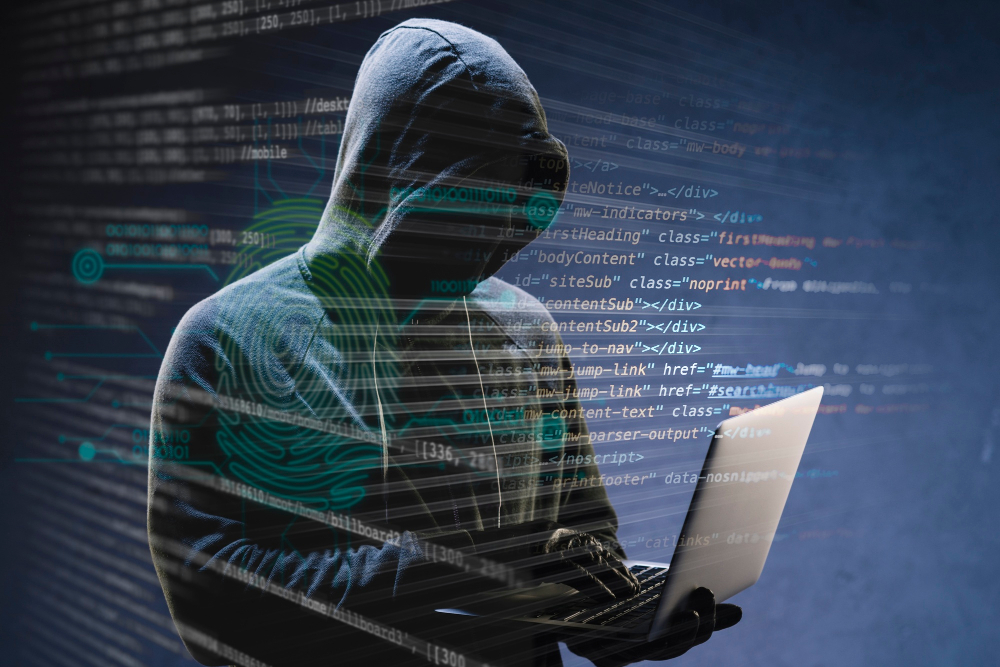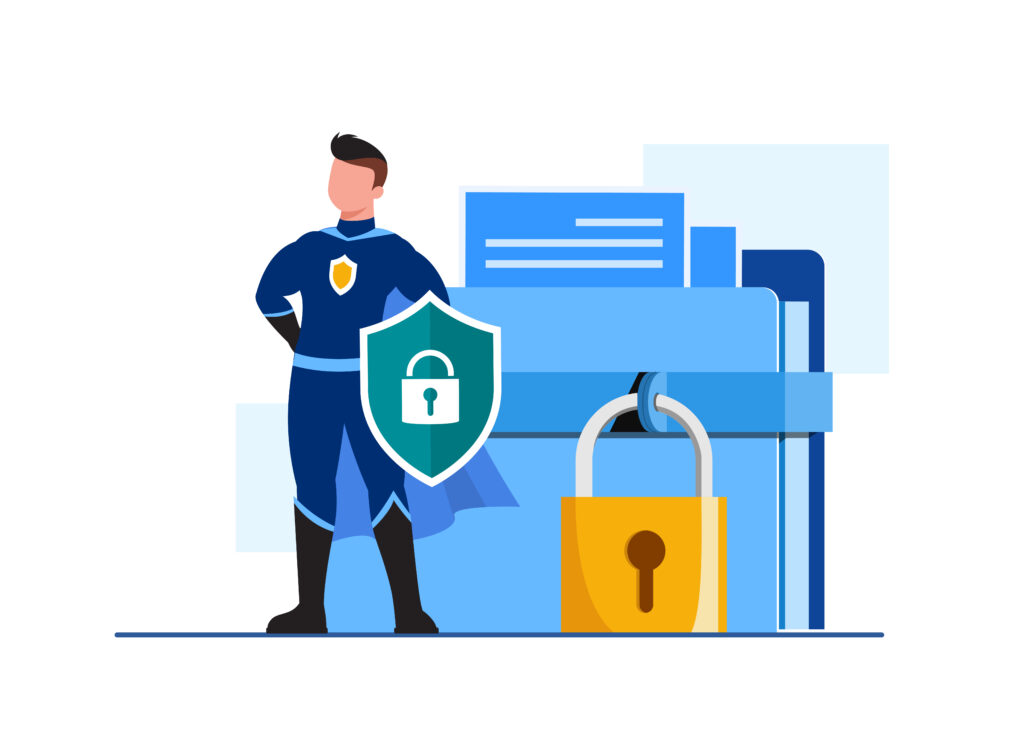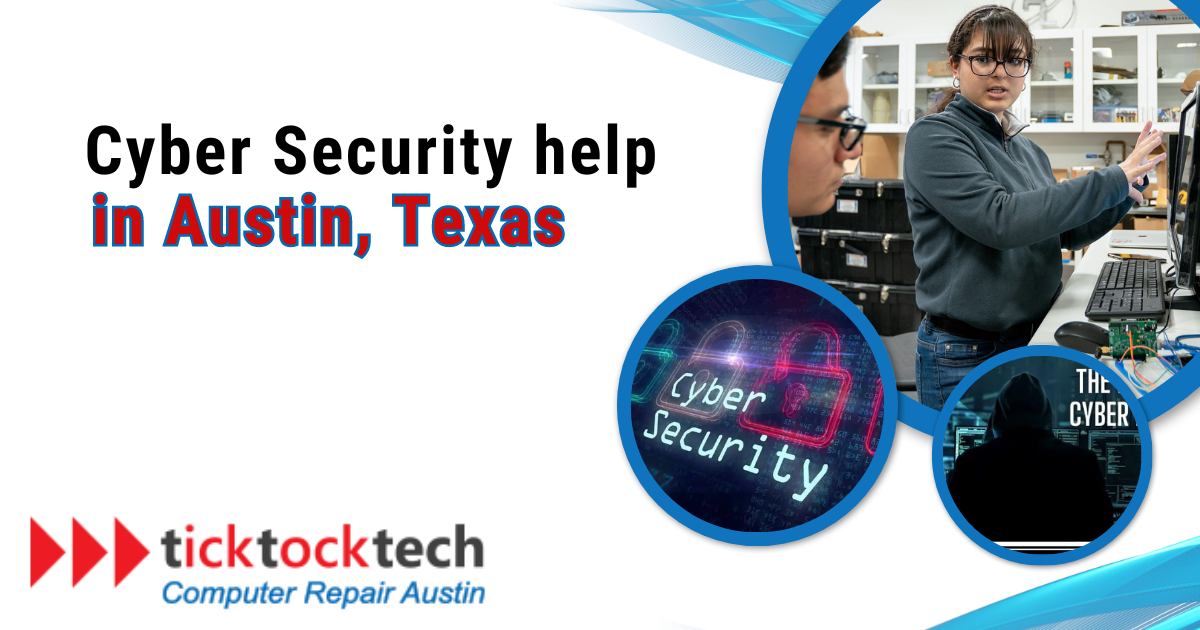The computer, internet, server, any gadgets that deal with data and the internet require cyber security. This goes from basic gadgets like the phone to bigger ones that can supercomputers and servers. Also, gadgets in between them should get the same attention concerning cybersecurity help, especially if they are official gadgets. The more important data you have, the more important the security.
Gadgets that use software will use data, and when this data gets into the wrong hands, I get you should be aware of the danger of that. However, most devices can be protected, using different methods depending on the scale of threat. The technique of protecting networks, computers, servers, mobile devices, electronic systems, and data from hostile intrusions is known as cyber security.
It is often referred to as electronic information security or information technology security. Austin is a very industrial and tech place; you should know what to do when a data or device security breach happens. Especially if you are a business or have important files on your devices. Cyber security help is, however, available in Austin, Texas.
How Cyber Attacks Happen
Cyber-attack mode depends on the type of attack, which could be from the user’s negligence or an external attack. User’s negligence in a way that if a user does not guild their device in respect to future attacks. For instance, anti-virus software is one of the most basic things when you get a new computer.
Some virus comes from online websites, or downloading corrupted files, especially on computers. Browsers however do have extensions to guild against such websites, or downloads. However, some laptops like MacBook do come with security in their OS against these websites. However, users are always advised against downloading or getting files from unknown sources or even going further to visit unsecured websites after warning.

Cyber-attacks from external sources however happen to high-target devices. High target in the sense that the attacker aims to get something out of it, either monetary, vital information, disruption, or spying. These attackers focus mostly on organizations, small businesses, companies, or people with large networks of devices working and sending data and using software.
Cyberattacks frequently take advantage of opportune moments, as hackers search for chinks in a computer system’s armor to exploit. These strategies can entail looking for bugs in a website’s code that would allow harmful code to be inserted, circumventing security and authentication mechanisms. These opportunistic attacks highlight the significance of strong cybersecurity procedures and ongoing watchfulness to protect sensitive digital assets from the constantly changing dangers in the cyber ecosystem.
Cybersecurity Tips to Keep Your Gadgets Safe
Whether you are an individual or organization, there are different ways to face cyber threats, but the best is to prevent them from happening. In some cases, cyber-attacks are not reversible, and some might result in financial losses or serious disruptions in business.
The bad part is that hackers update their skills, but the good part is that software companies update their security too. This is why the most important thing for businesses that make use of software programs is to regularly update them while also having anti-virus/malware programs.
Here are the Tips for cybersecurity prevention methods to protect your computer or servers from attack.
#1 Using a Very Strong Password
Strong passwords are essential for securing your online presence, with the following practical yet effective tips still in effect in 2023: Instead of complex character combinations, choose user-friendly passwords with a minimum of eight mixed characters and a maximum of 64; also, avoid sharing hints openly or publicly; and finally, promptly reset forgotten passwords and think about changing them annually for major sites.
#2 Visit and Download Files only from Trusted Sources
Trojan infections and other harmful software frequently spread via techniques like software downloads and drive-by installations. Cybercriminals use software, operating systems, or web browser flaws to introduce malicious code into seemingly trustworthy documents and online sites.
When users unknowingly download and install malicious software or browse compromised websites, this covert operation results in the stealth installation of Trojans on their systems.
Drive-by downloads are an example of a situation in which consumers are passive participants; when they visit a compromised website, viruses like Trojans are immediately installed on their computers. To protect your devices from these trickery techniques, take careful safeguards.
#3 Renowned Anti-Virus, Firewall, and Anti Malware Protection Software
Software for anti-virus (AV) and anti-malware protection is crucial in the fight against dangerous online threats. With the help of this program, you can defend your device against viruses and malware that could compromise your data. It’s essential to choose antivirus software provided by trusted vendors and to make sure that your device only has one AV program installed.
Employing a firewall in addition to anti-virus software is essential for protecting your data from harmful attacks. A firewall serves as a sentry, inspecting all incoming and outgoing data traffic to block hackers, malware, and other potentially harmful Internet activity. The Windows Firewall and Mac Firewall are respective built-in firewalls that come with popular operating systems like Windows and Mac OS X. To protect your network from potential assaults, your router should also have an integrated firewall.
#4 Automatic Software and OS updates
The foundation of effective cybersecurity is automatic software and operating system updates. They protect Your gadgets against new dangers by acting as a digital shield. These updates frequently include security upgrades, bug fixes, and patches for vulnerabilities that have been identified by the industry.
In 2023, you can prevent constant human intervention by setting automated upgrades, which will strengthen your gadgets continuously. This streamlines the procedure and ensures that your devices are using the most recent security measures, lowering the likelihood that they will become targets of cyberattacks. To improve your entire digital security posture, you can do it simply yet effectively by implementing this technique.
#5 Multifactor Verifications
Online security is greatly aided by multifactor verification, sometimes referred to as two-factor authentication or two-step factor authentication. It is the extra security measure trusted websites and applications use to secure your identity. This extra step is used by organizations including banks, social media sites, businesses, and schools to improve security.
The multifactor strategy adds complexity rather than merely depending on a password, which can be stolen, reused, or compromised. This second verification step is much more difficult for a hacker to imitate. The security of PCs, websites, servers, and data protection are all strengthened by using this technique.
#6 Beware of Phishing scams
To steal your personal information, such as login passwords or financial information, phishing schemes frequently use false emails, texts, or websites that pretend to be reliable organizations. Avoid clicking on dubious links or downloading attachments from untrusted sources to stay secure.
Keep your antivirus and anti-malware software up to date, and always confirm the legitimacy of requests for personal information. As knowledge is your first line of defense against these prevalent and always-changing threats, educate yourself and your coworkers about phishing strategies.
#7 Backup Regularly
The first thing on any device that works with data is backing up the data. The significance of routine data backups to avoid the complexities of data loss in network servers is a widespread misperception that many firms fail to recognize. It might be dangerous to rely entirely on system redundancy and to irregularly archive crucial datasets. It’s critical to understand that the safety net that redundancy provides cannot always be reliable, leaving your sensitive data exposed.
A regular backup strategy must be established to guarantee the security of your data. Adopting a weekly backup routine can add a degree of security against unanticipated occurrences rather than depending on sporadic archives. Consistent data backup procedures are essential for protecting your company’s continuity as well as risk reduction.
#8 Network Security
You must secure your wireless networks at home and work to safeguard yourself from online risks. Think about using a VPN for data security, updating firmware, changing your network’s name and password, enabling encryption (preferably WPA 2 or WPA 3), setting up a separate network for smart devices, disabling remote admin access, and regularly updating all connected devices. These actions will contribute to safe networks.
How to get Professional cybersecurity Help in Austin
A methodical approach is required to get expert cybersecurity support in Austin, Texas. Determine your cybersecurity needs first. Next, look for trustworthy Austin-based cybersecurity companies. To confirm their expertise, look for important certifications like CISSP. To evaluate their expertise and methodology, speak with possible experts. Request project proposals that detail the plans.

Examine their past performance and completed work to judge their competency. Check out the cybersecurity technologies and techniques help they use to protect your systems. Ask them about their strategies and procedures for handling incidents. Recognize their fee schedule, whether it be hourly rates or project-based costs.
Make sure they abide by all applicable laws and requirements. Conduct a thorough review of all contracts, including service level agreements (SLAs). Also, consider whether they provide your personnel with cybersecurity help training. Finally, to keep a successful collaboration, create clear communication protocols.
Frequently Asked Questions on Cybersecurity
Malware (viruses, ransomware), phishing scams, data breaches, and denial-of-service (DDoS) assaults are examples of common threats.
Change your passwords immediately, alert the appropriate parties, keep an eye on your financial accounts, and think about identity theft protection.
Look for trusted sources like government cybersecurity agencies, reputable cybersecurity companies, and educational institutions. Computer Repair shops in Austin like TickTockTech in partnership with Cybergood Security provide cyber security help services for individuals and companies in Austin, TX.
Current developments include AI-driven security, zero-trust design, and the development of cybersecurity automation technologies.

